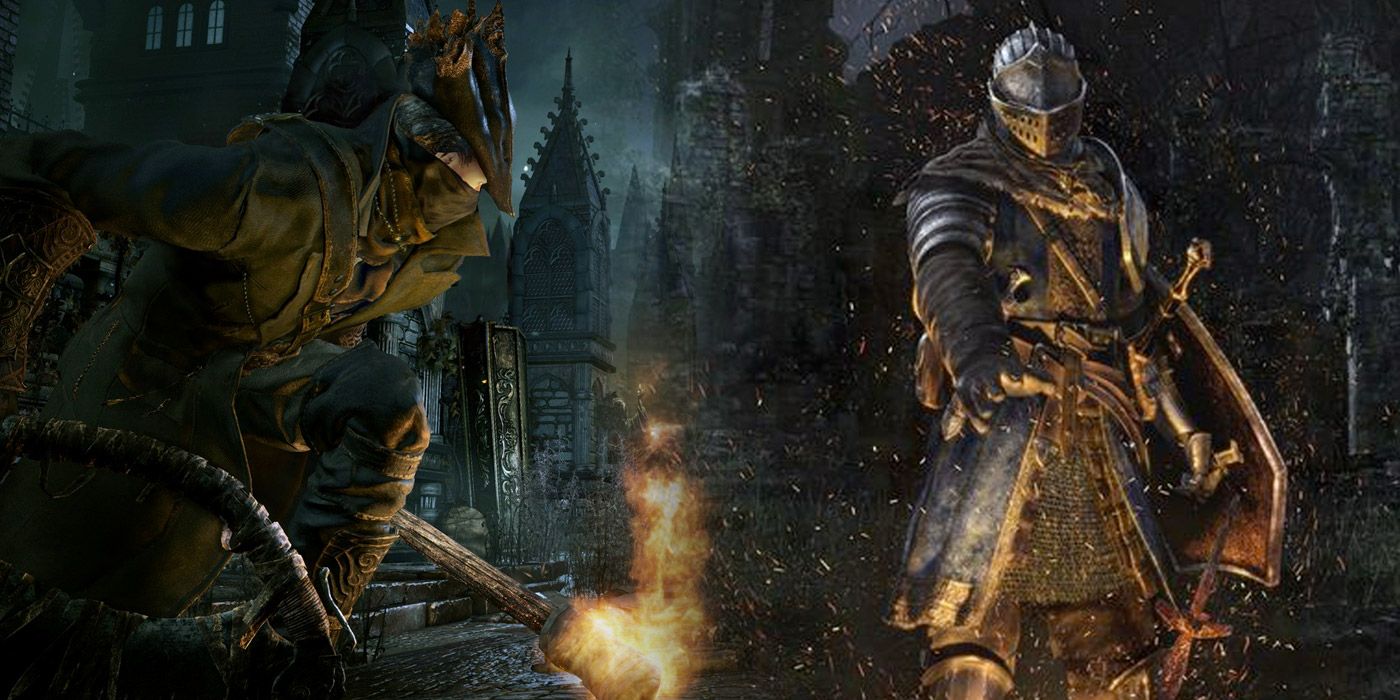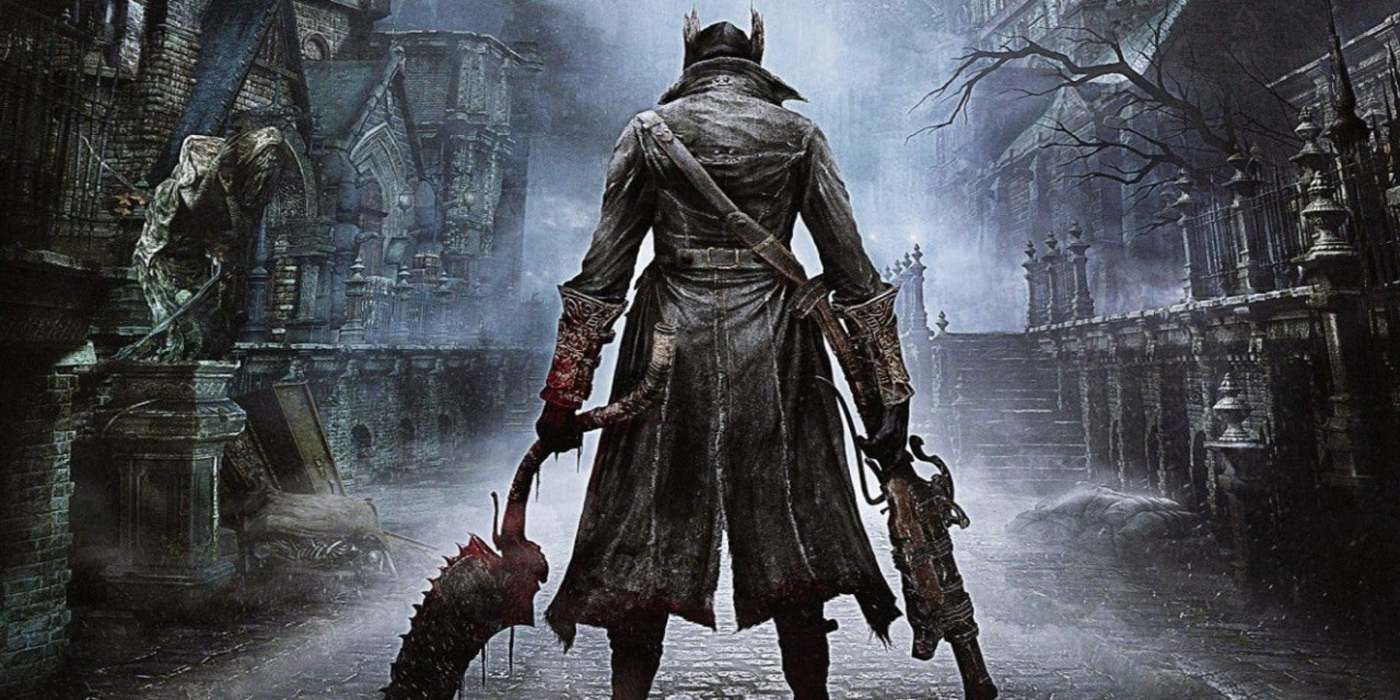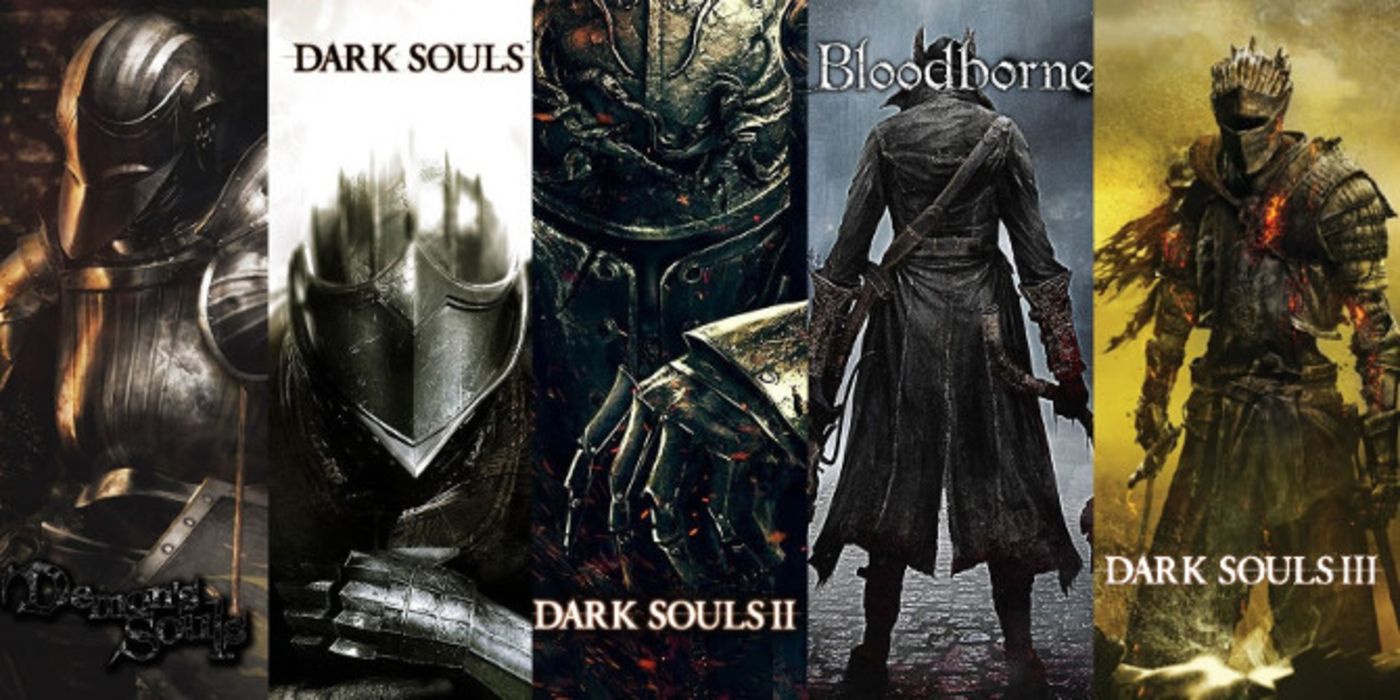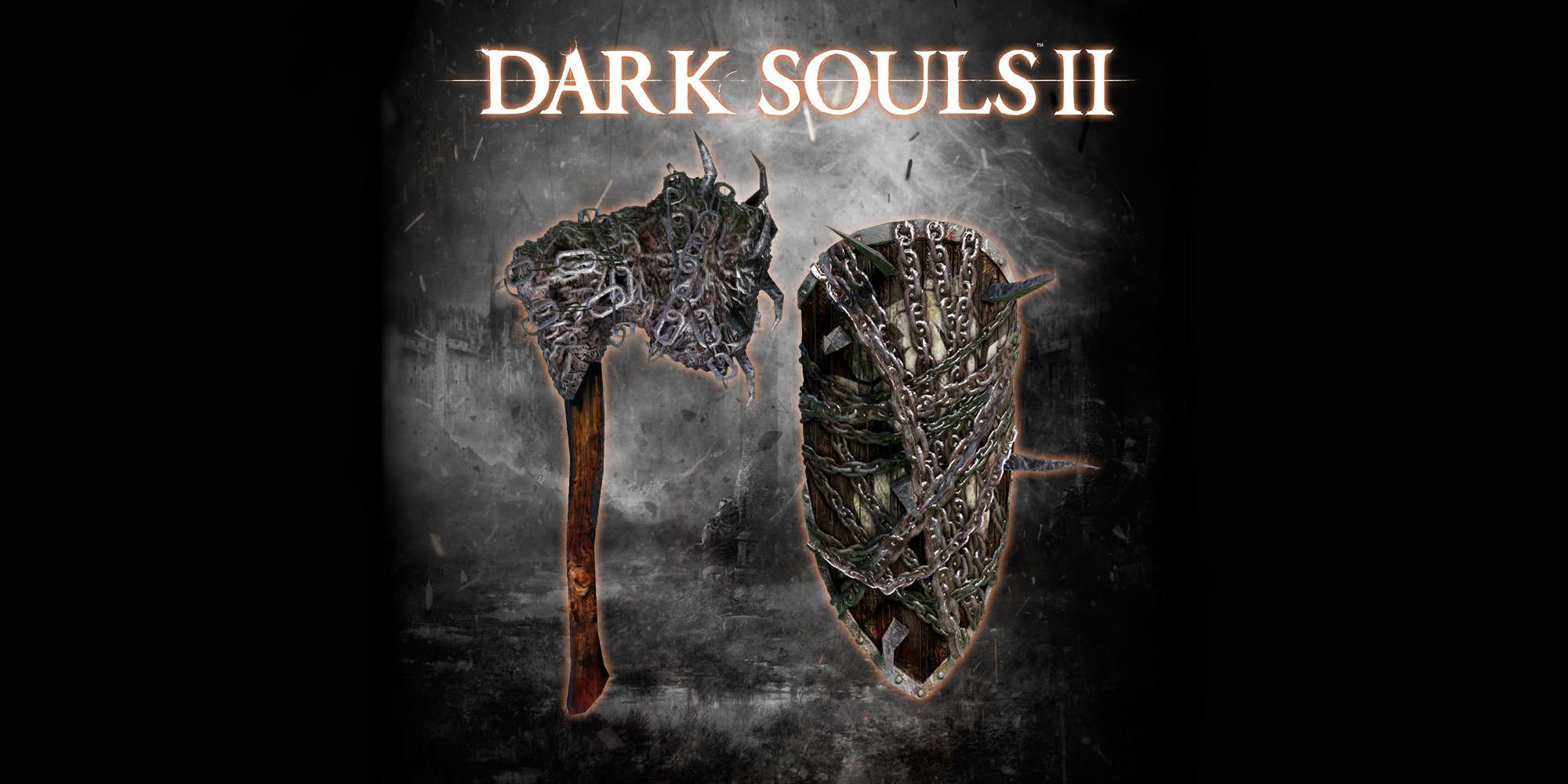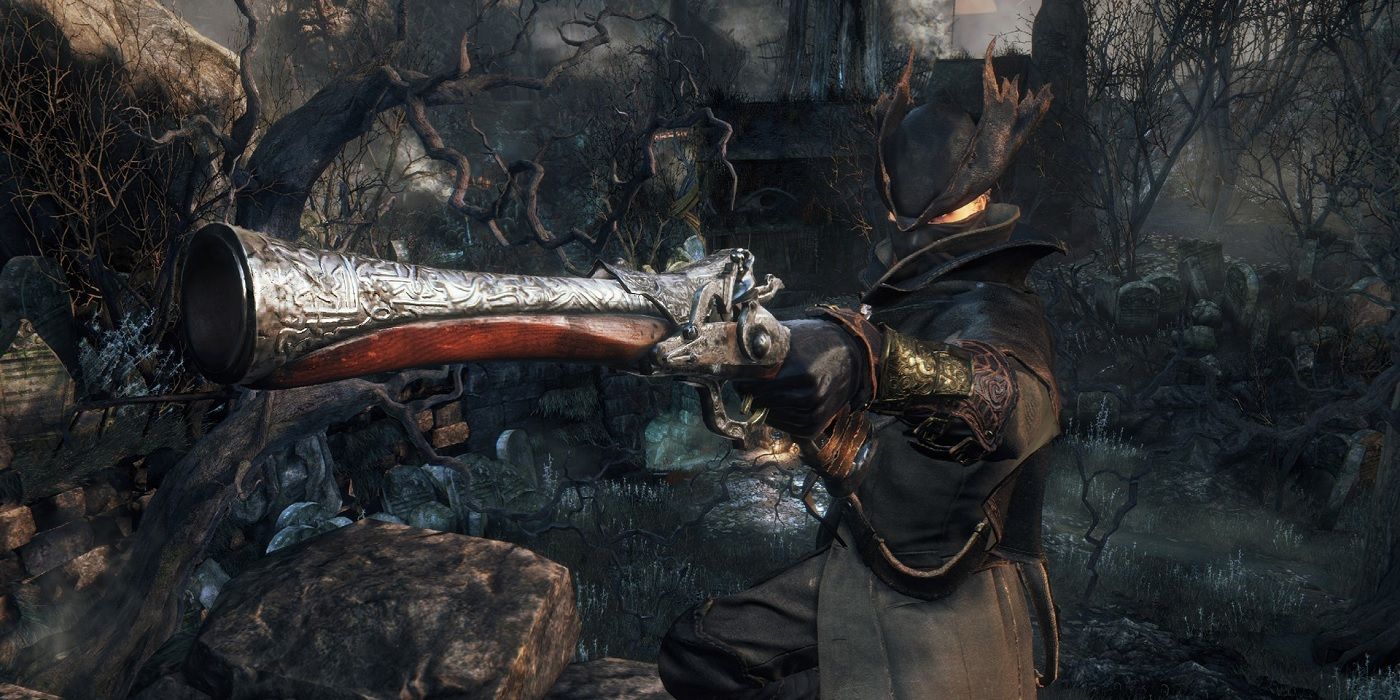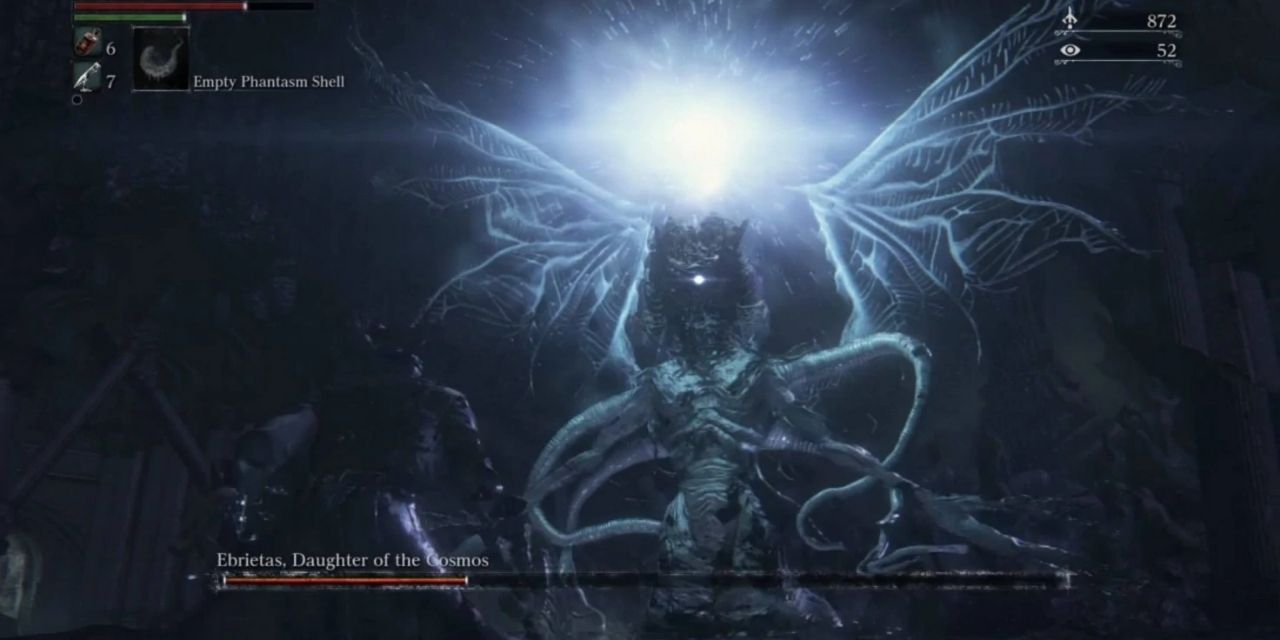Bloodborne is both a blessing and a curse for the Dark Souls series. In one sense, it attracted a countless number of new gamers to the series who might have never tried it, if not for the PS4 exclusivity. On the other hand, the Dark Souls games do not measure up against many of Bloodborne’s best qualities. Of course, Dark Souls can never escape comparisons towards the gothic-cosmic horror masterpiece, as the games share many similarities (and, of course, the same developer).
With a new trailer and details about the highly anticipated Elden Ring emerging this E3, it makes sense to think about the similarities and differences in the games that inspired it. Elden Ring looks like FromSoftware’s most ambitious title to date. That ambition is most obvious in how Elden Ring might take the best bits out of previous FromSoftware titles, including Bloodborne. Fans still clamor for a sequel or remaster of the game to this day, showing how important it still is to FromSoftware fans. However, many fans who prefer Bloodborne do so because of its many distinctive differences to the developer's other games.
Bloodborne’s Dark Souls-like Development
One of the key comparisons often made between the first Dark Souls and Bloodborne is the creative team that worked on them. In particular, creative director Hidetaka Miyazaki was the lead on Bloodborne as well as the original Dark Souls. That fact is often used to explain the troubled launch of Dark Souls 2. Miyazaki worked more closely on Bloodborne than on the second game in the Souls series, and the signature flair of Dark Souls is apparent in Bloodborne too.
Dark Souls skyrocketed the Souls series to fame after the cult success of Demon's Souls, with its tight, interconnected world and deeply complex narrative. Bloodborne took this formula, and reworked all the mechanics. While this may seem like a difference to the series writ large, it actually emulated what Dark Souls did to the series' tropes. In the same way, Bloodborne moved the franchise to entirely new heights, redefining certain elements of it. Since then, there are have been countless games like Bloodborne. These games take the quicker gameplay and aggressiveness and make it a priority.
Thanks to the input from Miyazaki and other Dark Souls developers, Bloodborne mirrored its predecessor's innovation and inspired so many other games to copy it. Souls-like games are incredibly popular nowadays, and many of them (like the upcoming Thymesia) seem to take more heavily from Bloodborne than other FromSoftware titles. This commitment to not playing it safe with design, and incorporating new and exciting mechanics is exactly the philosophy of Dark Soul's development.
How Bloodborne Made “Soulsborne” a Thing
Thanks to Bloodborne, the gaming phrase "Souls series" morphed into "Soulsborne." Not only did the game bring more players to the Souls series, but it was such a landmark title that it changed how the franchise is talked about in general discussion. Of course, for this series moniker to take off, the game has to carry several elements of the previous games over. For example, Bloodborne's locations look similar to other areas in the Souls series. The same level of difficulty and occasionally obtuse mechanics also appears in Bloodborne. The world connects in a complex way as well, and it is those tight, oppressive, but sprawling landscapes that characterize the Soulsborne series.
Engendering 'Passivity': Bloodborne Shirked the Shield
Interestingly, Bloodborne’s item descriptions take shots at styles of Dark Souls play. Unlike the wealth of options in Dark Souls, the only shield available in Bloodborne is a wooden plank shield. The description on the item notes that it can “engender passivity” in the player, which both reflects on Bloodborne’s radically different playstyle, and also mocks a common Dark Souls mode of gameplay.
It is hard to exactly determine the best starting class in Dark Souls. However, many players find themselves picking the “knight” at character creation. This knight is decked out like the typical sword and board medieval warrior, and plays like one too. While sorcerers and clerics in Dark Souls hurl magic motes and holy lightning across the map, knights typically get up close and personal, glancing out from their shields every time they attack.
According to Bloodborne, that’s a really boring way to play the game. While the sword and shield may be a popular Dark Souls archetype, online players will notice the abundance of shirtless great sword wielders that roll and bound across PvP areas, often with only a tiny dagger for countering opponents. This is the exact playstyle that Bloodborne encourages.
The Problem With Parrying in Bloodborne
As well as removing all things shield-like in the game, Bloodborne reimagined Dark Soul’s parry mechanics, and made the game magnitudes quicker as a result. In the Souls series, players can parry with a shield or specific dagger in their off-hand in a very tight window. On the other hand, Bloodborne's method of parrying uses guns. These guns give a much larger parry window than Dark Souls. A more accessible parry mechanic is entirely necessary for Bloodborne, which boasts a much more frenetic style of play. As such, the different parry mechanics make Bloodborne play in an entirely distinct way to its predecessors.
Themes, Glorious Themes
Much has been written on the oppressive nature of Dark Souls and its mechanics, and how it comments on the cyclical, perpetual nature of violence and empire. In particular, games like Dark Souls 2 make explicit commentary on how the engines of imperialism have this eventually self-destructive quality. The staggering corpse of King Vendrick is a perfect example of this, an eternally wandering agent of a collapsed empire who cannot do anything but tread the fateful steps of his past.
Bloodborne takes an entire different approach to its themes. The game starts as this coiling gothic horror dealing with lycanthropy and disease, and the ways society breaks down under various pressures. As this plot unfurls, it reveals its true intentions: it is cosmic horror of the highest proportions. The intimate terror of disease and infection of the early game pales in comparison to the grim horror of the unspeakably large entities that stalk the endgame.
Another fascinating element is the game's insight mechanic. Players can go through the majority of the game entirely unaware of the cosmic horror implications, and there are even multiple endings depending on how much the player interacted with the cosmic entities. The fact that one player can go through a game that seems to be focussing on human psychology, nightmare, and trauma, and be totally unaware of the greater cosmic threat underlying the game's themes is fascinating. Arguably, it demonstrates that Bloodborne is not only thematically different to Dark Souls, but portrays those themes in a much more complex narrative.

